Hyundai IONIQ 6 vs XPeng P7 – Performance, range & efficiency compared
Everyday use, family trips or long-distance drives – here’s where the differences show.
Discover whether Hyundai IONIQ 6 or XPeng P7 fits your lifestyle better.
Costs and Efficiency:
Price and efficiency are key factors when choosing a car – and this is often where the real differences emerge.
Hyundai IONIQ 6 has a to a small extent advantage in terms of price – it starts at 37600 £, while the XPeng P7 costs 42500 £. That’s a price difference of around 4886 £.
In terms of energy consumption, the advantage goes to the Hyundai IONIQ 6: with 13.90 kWh per 100 km, it’s distinct more efficient than the XPeng P7 with 16.80 kWh. That’s a difference of about 2.90 kWh.
As for range, the Hyundai IONIQ 6 performs slight better – achieving up to 614 km, about 38 km more than the XPeng P7.
Engine and Performance:
Power, torque and acceleration say a lot about how a car feels on the road. This is where you see which model delivers more driving dynamics.
When it comes to engine power, the Hyundai IONIQ 6 has a evident edge – offering 650 HP compared to 473 HP. That’s roughly 177 HP more horsepower.
In acceleration from 0 to 100 km/h, the Hyundai IONIQ 6 is evident quicker – completing the sprint in 3.20 s, while the XPeng P7 takes 4.10 s. That’s about 0.90 s faster.
In terms of top speed, the Hyundai IONIQ 6 performs distinct better – reaching 257 km/h, while the XPeng P7 tops out at 200 km/h. The difference is around 57 km/h.
There’s also a difference in torque: Hyundai IONIQ 6 pulls hardly perceptible stronger with 770 Nm compared to 757 Nm. That’s about 13 Nm difference.
Space and Everyday Use:
Whether family car or daily driver – which one offers more room, flexibility and comfort?
Both vehicles offer seating for 5 people.
In curb weight, Hyundai IONIQ 6 is minimal lighter – 1850 kg compared to 2020 kg. The difference is around 170 kg.
In terms of boot space, the XPeng P7 offers slight more room – 440 L compared to 401 L. That’s a difference of about 39 L.
Maximum payload is identical – both can carry up to 430 kg.
Who wins the race?
The Hyundai IONIQ 6 proves to be is largely superior and therefore becomes our DriveDuel Champion!
Hyundai IONIQ 6 is the better all-rounder in this comparison.
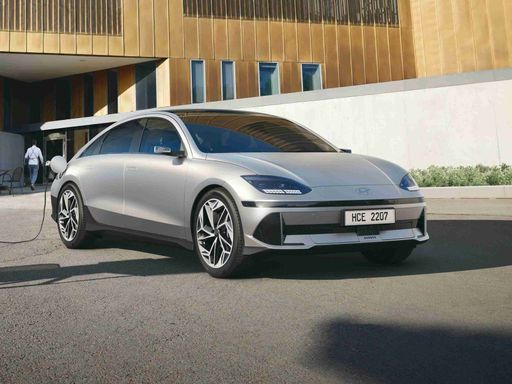 @ Hyundai Motor Company
@ Hyundai Motor Company
Hyundai IONIQ 6
Hyundai IONIQ 6
The Hyundai IONIQ 6 merges futuristic design with eco-friendly technology, offering a glimpse into the future of electric mobility. Its sleek silhouette and aerodynamic profile are sure to capture attention on the road, while the interior provides a seamless blend of comfort and cutting-edge digital features. With a focus on efficiency and sustainability, this model represents a significant step forward in the evolution of electric vehicles.
details @ Hyundai Motor Company
@ Hyundai Motor Company
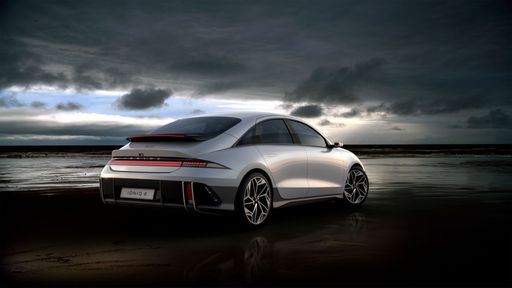 @ Hyundai Motor Company
@ Hyundai Motor Company
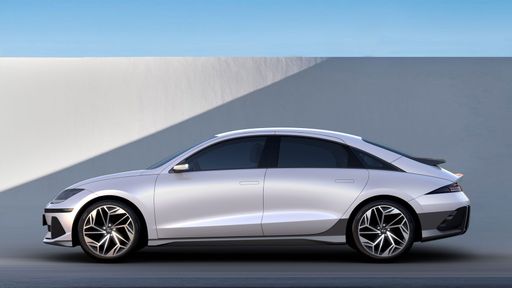 @ Hyundai Motor Company
@ Hyundai Motor Company
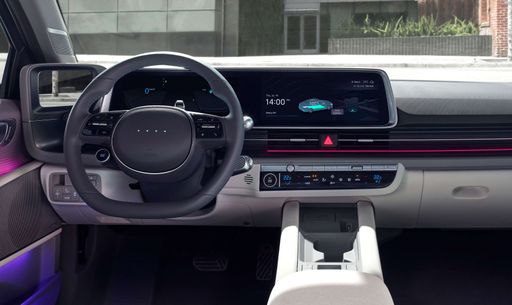 @ Hyundai Motor Company
@ Hyundai Motor Company
XPeng P7
The XPeng P7 is a sleek and stylish electric saloon that embodies the future of automotive innovation. With its modern design and advanced technology, it offers an impressive driving experience, combining luxury with sustainability. The interior is thoughtfully designed to provide comfort and convenience, making it a strong contender in the competitive market of electric vehicles.
details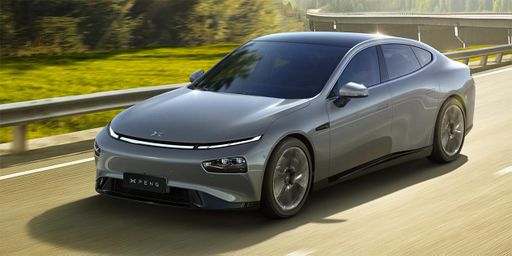 @ XPeng Motors
@ XPeng Motors
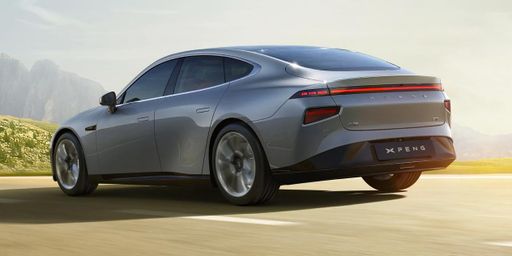 @ XPeng Motors
@ XPeng Motors
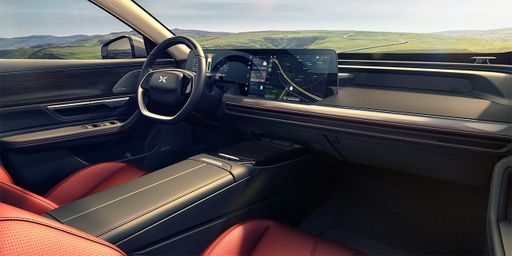 @ XPeng Motors
@ XPeng Motors
 @ Hyundai Motor Company
@ Hyundai Motor Company
|
 @ XPeng Motors
@ XPeng Motors
|
|
|
|
Costs and Consumption |
|
|---|---|
|
Price
37600 - 64300 £
|
Price
42500 - 50200 £
|
|
Consumption L/100km
-
|
Consumption L/100km
-
|
|
Consumption kWh/100km
13.9 - 15.1 kWh
|
Consumption kWh/100km
16.8 - 19.2 kWh
|
|
Electric Range
429 - 614 km
|
Electric Range
505 - 576 km
|
|
Battery Capacity
53 - 84 kWh
|
Battery Capacity
82.70 kWh
|
|
co2
0 g/km
|
co2
0 g/km
|
|
Fuel tank capacity
-
|
Fuel tank capacity
-
|
Dimensions and Body |
|
|---|---|
|
Body Type
Hatchback
|
Body Type
Sedan
|
|
Seats
5
|
Seats
5
|
|
Doors
4
|
Doors
5
|
|
Curb weight
1850 - 2095 kg
|
Curb weight
2020 - 2140 kg
|
|
Trunk capacity
401 L
|
Trunk capacity
440 L
|
|
Length
4855 - 4935 mm
|
Length
4888 mm
|
|
Width
1880 - 1940 mm
|
Width
1896 mm
|
|
Height
1495 mm
|
Height
1450 mm
|
|
Max trunk capacity
-
|
Max trunk capacity
-
|
|
Payload
425 - 430 kg
|
Payload
430 kg
|
Engine and Performance |
|
|---|---|
|
Engine Type
Electric
|
Engine Type
Electric
|
|
Transmission
Automatic
|
Transmission
Automatic
|
|
Transmission Detail
Reduction Gearbox
|
Transmission Detail
Reduction Gearbox
|
|
Drive Type
Rear-Wheel Drive, All-Wheel Drive
|
Drive Type
Rear-Wheel Drive, All-Wheel Drive
|
|
Power HP
151 - 650 HP
|
Power HP
276 - 473 HP
|
|
Acceleration 0-100km/h
3.2 - 8.8 s
|
Acceleration 0-100km/h
4.1 - 6.7 s
|
|
Max Speed
185 - 257 km/h
|
Max Speed
200 km/h
|
|
Torque
350 - 770 Nm
|
Torque
440 - 757 Nm
|
|
Number of Cylinders
-
|
Number of Cylinders
-
|
|
Power kW
111 - 478 kW
|
Power kW
203 - 348 kW
|
|
Engine capacity
-
|
Engine capacity
-
|
General |
|
|---|---|
|
Model Year
2022 - 2025
|
Model Year
2024
|
|
CO2 Efficiency Class
A
|
CO2 Efficiency Class
A
|
|
Brand
Hyundai
|
Brand
XPeng
|
What drive types are available for the Hyundai IONIQ 6?
Available configurations include Rear-Wheel Drive or All-Wheel Drive.
The prices and data displayed are estimates based on German list prices and may vary by country. This information is not legally binding.
